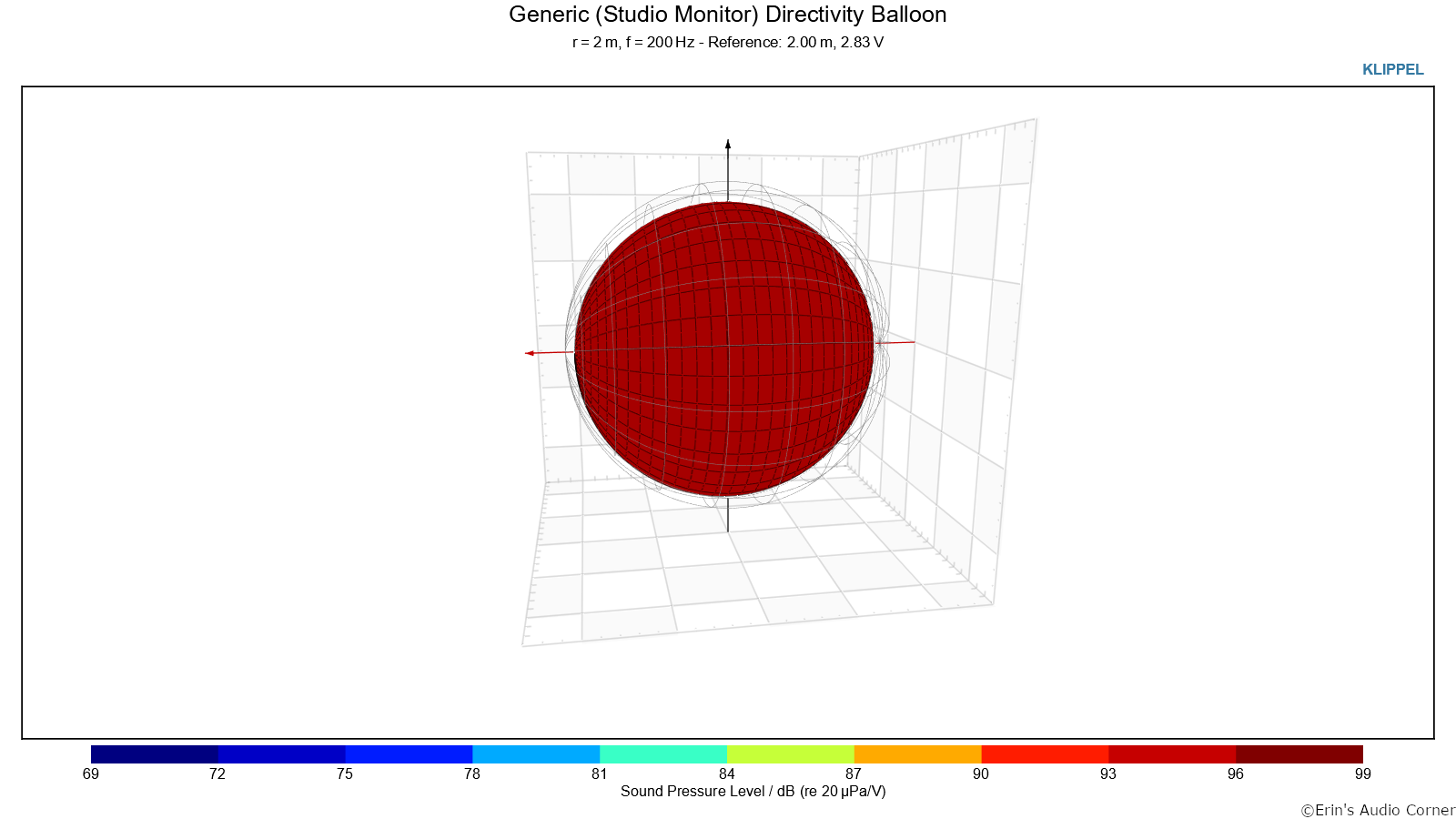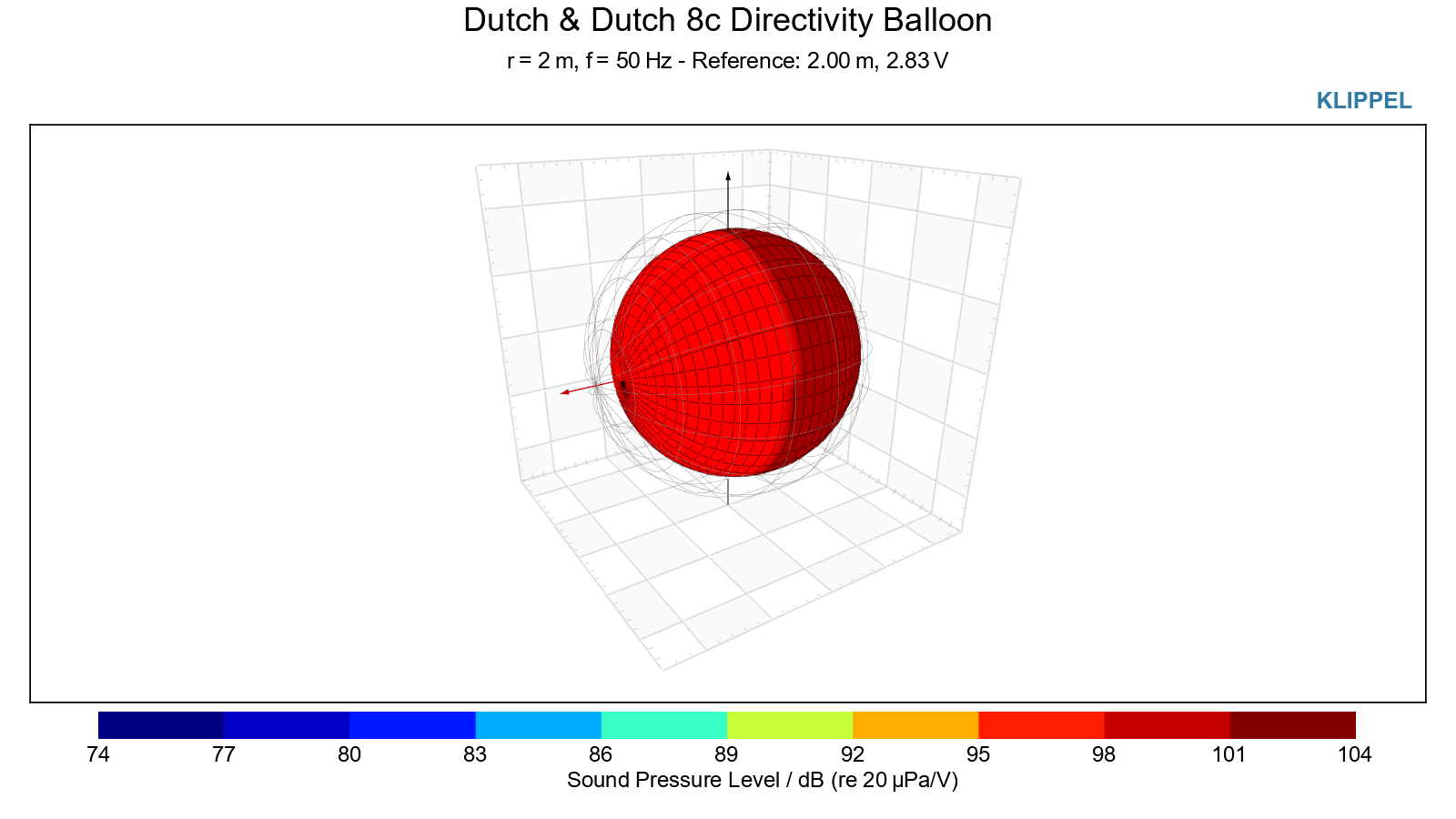A cardioid speaker - like the Dutch & Dutch 8c is designed to
not be omnidirectional above a certain frequency, and in the case of the 8c that frequency is 100Hz. Why would this be useful? Well, remember, the 8c features subwoofers on the rear of the speaker. These subwoofers
depend on boundary reinforcement in order for the response to extend as low as possible in frequency. The issue, typically, would be rear-wall reflections. If the 8c speaker had the upper midbass and lower midrange frequencies radiating backwards then there would be a high degree (no pun intended) of sound traveling rearward only to be reflected off the rear wall and back to the front of the speaker causing comb filtering in these lower frequencies. In terms of sound, this can (and typically does) result in marred tonality, impact and imaging of the mid-to-low frequencies at the listening position. The 8c claims to have “constant directivity” above 100Hz; something it does through its cardioid design.
How well does this actually work, though? Well, let’s take a look at the typical response of a generic studio monitor at 200Hz. The below graphic is a plot of the sound field of said speaker at 200Hz. This was generated using Klippel’s Near-Field Scanner and Visualization module. The story here is the sound is a big ball of energy, radiating in all directions. In front (illustrated by the red arrow), backwards, up and down. This energy is all practically the same SPL, too. Nothing new here. Typical of a standard monopole speaker.
Now, let’s look at the response of the Dutch & Dutch 8c at 200Hz, below. What we see here is in stark contrast to the above. The first thing that stands out is there is practically zero sound radiating backwards (opposite of the red arrow). And what energy
is back there is roughly 10-15dB down in level relative to what is firing forward.
What does this mean? This means the 8c is a very well designed cardioid speaker. The manufacturer claims as much. And this data backs it up.
Just for fun, I went another step and have provided a gif of the sound radiation at varying frequencies below. A few notes about this gif:
- Look how the response is completely omnidirectional at 50Hz but practically all forward firing by 150Hz and by 200Hz is forward firing.
- You can see there is a mismatch in directivity in the crossover region (as illustrated by the balloon shape not being quite spherical at 2000Hz). This is also seen in the CTA-2034 data set.



